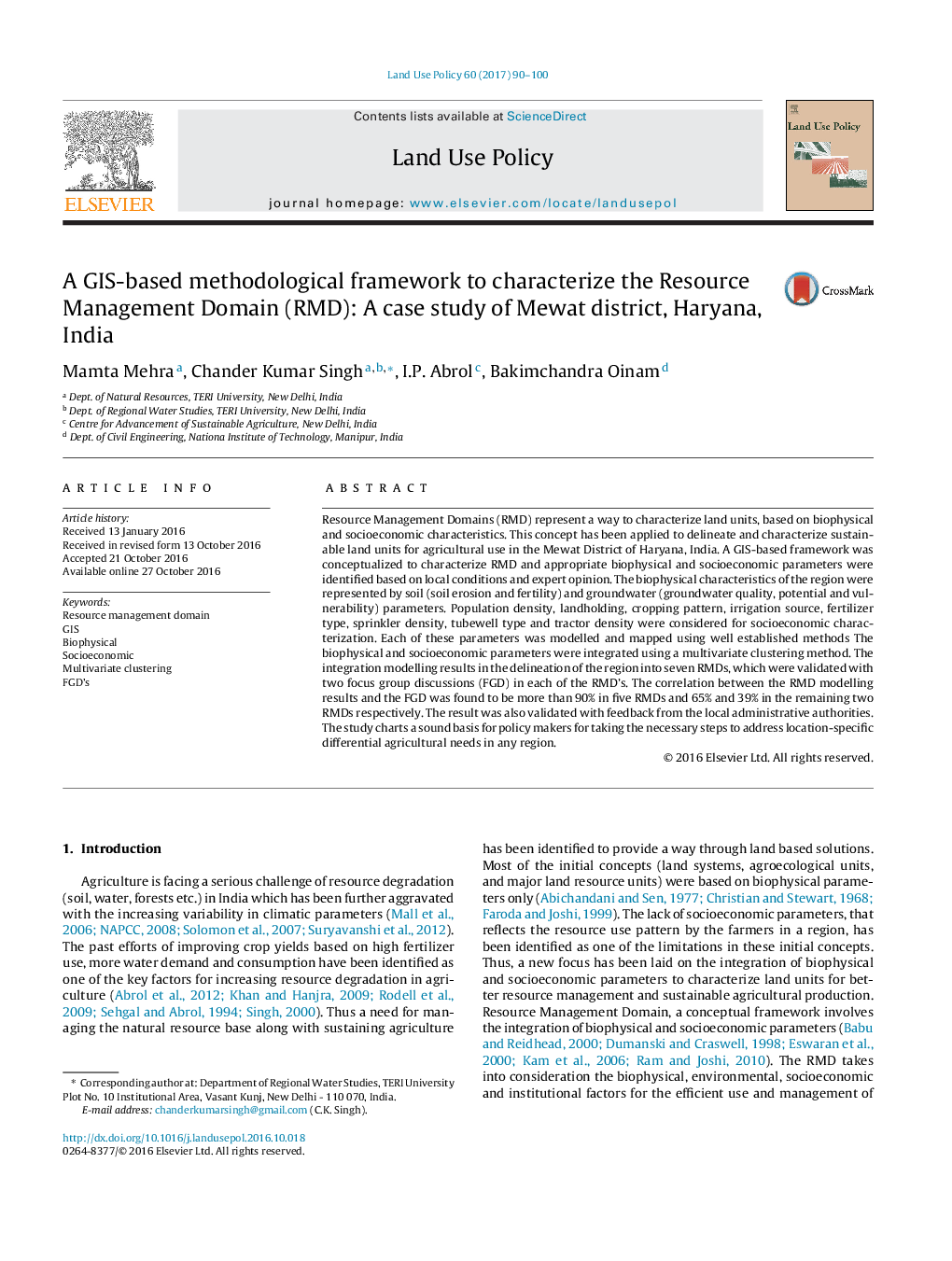| کد مقاله | کد نشریه | سال انتشار | مقاله انگلیسی | نسخه تمام متن |
|---|---|---|---|---|
| 6461386 | 1421823 | 2017 | 11 صفحه PDF | دانلود رایگان |

- Resource Management Domain (RMD) delineation using biophysical and socioeconomic variables.
- Biophysical and socioeconomic variables integrated using a multivariate clustering method in GIS.
- Seven RMD's were delineated and validated with two focus groups in each RMD.
- The correlation between the RMD and FGD was found to be more than 90% in five RMDs.
Resource Management Domains (RMD) represent a way to characterize land units, based on biophysical and socioeconomic characteristics. This concept has been applied to delineate and characterize sustainable land units for agricultural use in the Mewat District of Haryana, India. A GIS-based framework was conceptualized to characterize RMD and appropriate biophysical and socioeconomic parameters were identified based on local conditions and expert opinion. The biophysical characteristics of the region were represented by soil (soil erosion and fertility) and groundwater (groundwater quality, potential and vulnerability) parameters. Population density, landholding, cropping pattern, irrigation source, fertilizer type, sprinkler density, tubewell type and tractor density were considered for socioeconomic characterization. Each of these parameters was modelled and mapped using well established methods The biophysical and socioeconomic parameters were integrated using a multivariate clustering method. The integration modelling results in the delineation of the region into seven RMDs, which were validated with two focus group discussions (FGD) in each of the RMD's. The correlation between the RMD modelling results and the FGD was found to be more than 90% in five RMDs and 65% and 39% in the remaining two RMDs respectively. The result was also validated with feedback from the local administrative authorities. The study charts a sound basis for policy makers for taking the necessary steps to address location-specific differential agricultural needs in any region.
Journal: Land Use Policy - Volume 60, January 2017, Pages 90-100